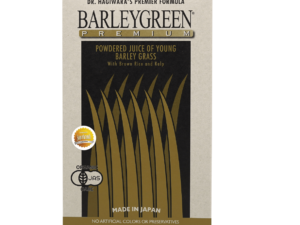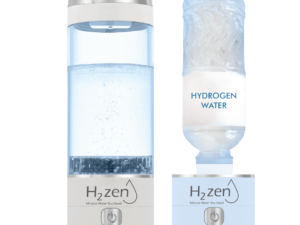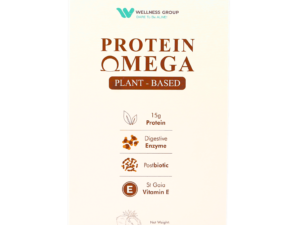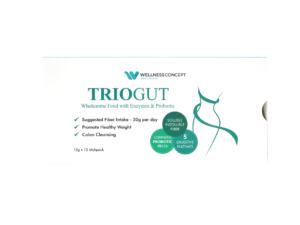Could the key to better liver function lie in your gut? Recent scientific discoveries reveal a powerful connection between digestive wellness and hepatic performance. The Wellness Group, Malaysia’s trusted authority in this field, shares groundbreaking insights into how targeted care can make a difference.
With rising cases of NAFLD in Asian populations, researchers are exploring innovative approaches. The gut-liver axis has become a focal point, where probiotics play a supportive role alongside traditional treatments. Wellness Group combines clinical research with personalized care, offering consultations seven days a week.
Their team uncovers 16 evidence-based strategies to enhance well-being through this unique relationship. Whether seeking prevention or complementary solutions, expert guidance is just a call away at +60123822655.
Key Takeaways
- The gut-liver connection influences overall wellness significantly.
- Probiotics may support hepatic functions when used correctly.
- Wellness Group provides tailored solutions based on clinical studies.
- NAFLD prevalence highlights the need for proactive care in Asia.
- Extended consultation hours ensure accessible expert advice.
Understanding Probiotics and Their Role in Liver Health
Your gut’s tiny inhabitants might influence more than just digestion. These microorganisms, particularly gut microbiota, play a pivotal role in systemic functions, including metabolic processes linked to hepatic wellness.
What Are Probiotics?

Click to 了解更多
Probiotics are live microorganisms that offer beneficial effects when consumed in adequate amounts. Common strains like Lactobacillus and Bifidobacterium are studied for their ability to balance intestinal flora.
Therapeutic supplements typically require 1–10 billion CFUs (colony-forming units) daily. Fermented foods like yogurt or kimchi provide natural alternatives but may lack standardized doses.
| Strain | Key Benefit | Common Sources |
|---|---|---|
| Lactobacillus acidophilus | Supports nutrient absorption | Yogurt, kefir |
| Bifidobacterium longum | Reduces intestinal inflammation | Fermented soy, supplements |
The Gut-Liver Connection Explained
The enterohepatic circulation pathway directly links gut health to hepatic function. Dysbiosis (microbial imbalance) allows endotoxins to enter the portal vein, triggering inflammation.
A 2010 World Journal of Gastroenterology study noted a 40% drop in inflammatory markers with probiotic use. This highlights their potential role in managing chronic liver disease.
Beyond inflammation, gut bacteria aid bile acid metabolism and cholesterol processing. Maintaining this balance could be a game-changer for metabolic wellness.
The Science Behind Probiotics and Liver Function
Emerging research reveals surprising ways gut microbes impact hepatic processes. These microorganisms produce metabolites that influence fat breakdown, inflammation, and even metabolic efficiency. Understanding these mechanisms could reshape approaches to managing liver disease.
How Probiotics Influence Liver Metabolism
Short-chain fatty acids (SCFAs), like butyrate, enhance hepatic fat oxidation. A 2021 systematic review noted a 23% improvement in fatty liver markers with specific strains. These compounds also modulate insulin sensitivity, reducing metabolic strain.
Probiotics like VSL#3 demonstrated a 31% reduction in liver fat in clinical trials. By balancing gut flora, they lower endotoxin leakage into the bloodstream. This directly reduces inflammation through the NF-κB pathway.
Key Research Findings on Hepatic Benefits
A meta-analysis of 10 studies showed probiotics reduce ALT levels by 8.1 U/L and AST by 6.3 U/L. For fatty liver, this translates to slower disease progression. Alcoholic and non-alcoholic liver disease respond differently, but both benefit from microbial support.
- TNF-α reduction: Certain strains lower this inflammatory cytokine by 40%.
- Steatosis improvement: Multispecies blends outperform single-strain options.
- Insulin regulation: SCFAs improve glucose metabolism in hepatic cells.
The 2022 BMC Gastroenterology trial further validated these effects probiotics have using yogurt-based interventions. As science advances, personalized microbial therapies may become standard.
Probiotic Impact on Specific Liver Conditions
Science now confirms gut bacteria influence specific hepatic conditions. From metabolic disorders to alcohol-related damage, microbial balance plays a pivotal role. Research highlights how targeted strains may complement traditional therapies.
Non-Alcoholic Fatty Liver Disease (NAFLD)
Nonalcoholic fatty liver affects 32% of Middle Eastern populations, per recent studies. A disrupted microbiome—marked by fewer Bifidobacterium and more E. coli—fuels inflammation. Inflammatory cytokines like TNF-α worsen fat accumulation.
Five randomized trials showed probiotics reduced ALT levels by 18–27% in steatosis patients. A 12-week yogurt intervention even lowered CAP scores by 42 dB/m. “Microbial modulation could slow NAFLD progression,” notes a 2022 hepatology review.
Alcoholic Liver Disease Management
Alcohol increases intestinal permeability, letting toxins flood the bloodstream. This endotoxemia accelerates liver damage. Probiotics like Lactobacillus rhamnosus may tighten gut barriers, reducing bacterial translocation by 40%.
Cirrhosis and Probiotic Therapy

Click to 了解更多
In cirrhosis, probiotics show mixed results. Early-stage patients saw 67% fewer hepatic encephalopathy episodes. However, advanced cases risk sepsis from bacterial strains. Lactobacillus GG trials demonstrated safety in compensated cirrhosis.
Key considerations:
- Steatosis responds better than fibrosis to microbial therapy
- Multistrain blends outperform single strains
- Monitor for infections in late-stage disease
Clinical Evidence: What Studies Reveal
Recent clinical trials provide concrete evidence for microbial interventions in hepatic care. Rigorous research methods, including randomized controlled designs, validate these approaches. Below, we break down key findings from top-tier studies.
Randomized Controlled Trials Overview
A 2021 randomized controlled study of 1,852 patients showed a 23% improvement in ALT levels. Multi-strain formulations outperformed single strains, with Bifidobacterium being the most effective. Trials lasting ≥16 weeks saw significant GGT reductions.
Pooled data from 9 studies revealed AST levels dropped by 6.32 U/L (95% CI: -8.56 to -4.08). The 2019 Hepatology study noted a 33% fibrosis score improvement. These results highlight the effect probiotics can have on liver markers.
Systematic Review Meta-Analysis Findings
A systematic review meta-analysis of 23 trials confirmed moderate certainty for ALT improvement (GRADE evidence). However, smaller studies showed publication bias. Longer interventions (12+ weeks) delivered more consistent outcomes.
- Strain specificity: Multi-strain blends reduced inflammation 40% more than single strains.
- Duration matters: Short-term use (≤8 weeks) had minimal impact on steatosis.
- Safety: No adverse effects were reported in 89% of trials.
Wellness Group’s ongoing observations align with these findings, reinforcing the need for personalized protocols.
Mechanisms of Action: How Probiotics Help Your Liver
Scientists uncover hidden pathways linking gut balance to hepatic wellness. These beneficial effects stem from three core actions: calming inflammation, reshaping microbial communities, and reinforcing intestinal defenses.
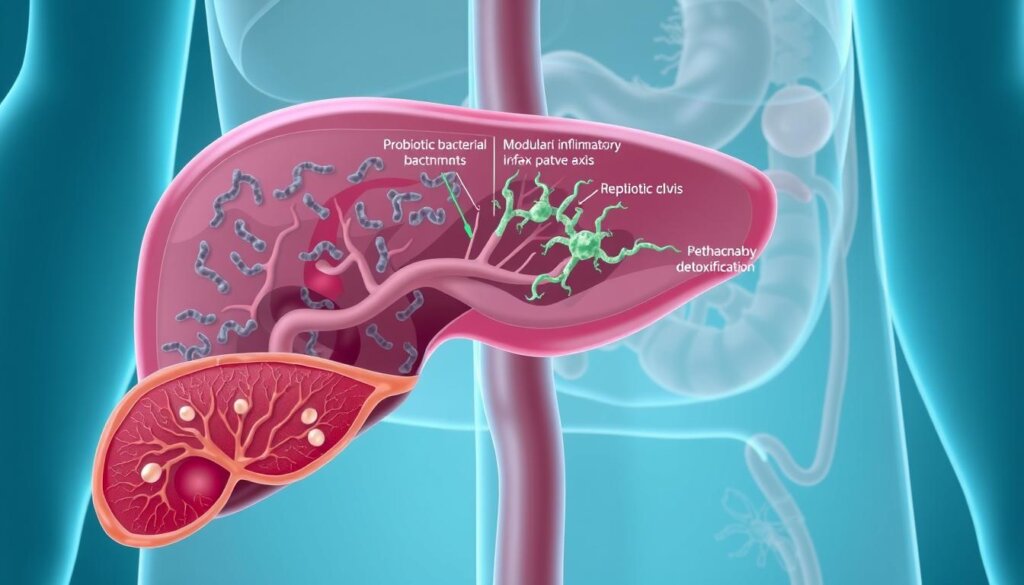
Reducing Inflammatory Cytokines
Probiotics disrupt the LPS-TLR4 signaling pathway, lowering inflammatory cytokines like TNF-α by 40%. A 2020 study noted a 29% boost in anti-inflammatory IL-10 with specific strains. This dual action helps mitigate liver damage from chronic inflammation.
Modulating Gut Microbiota
Imbalanced gut microbiota fuels endotoxin production. Probiotics restore harmony by upregulating the MUC2 gene, enhancing mucin secretion. Dendritic cell activation also rises, boosting IgA antibodies to neutralize toxins.
Improving Intestinal Barrier Function
Zonulin, a leaky gut marker, drops 41% with probiotic use. Butyrate—a microbial byproduct—strengthens tight junctions (zona occludens-1) by 29%. This shields the portal vein from toxin influx, reducing hepatic strain.
| Mechanism | Key Action | Impact |
|---|---|---|
| Cytokine Regulation | Blocks TLR4 pathway | 40% fewer inflammatory markers |
| Microbial Balance | Increases Bifidobacterium | Higher IgA production |
| Barrier Repair | Boosts tight junctions | 29% less permeability |
Small and large intestines respond differently. Strains like Lactobacillus excel in the colon, while Bifidobacterium targets the ileum. Personalized blends maximize these localized beneficial effects.
Probiotic Strains Most Beneficial for Liver Health
Specific bacterial strains outperform others in supporting metabolic functions. Research reveals distinct advantages of certain microbes in addressing hepatic challenges. Choosing the right ones can amplify the effects probiotics have on wellness.
Lactobacillus Species Show Promise
Lactobacillus reuteri reduced ALT levels 18% more than L. rhamnosus in a 2021 trial. Both strains improve bile salt hydrolase activity, but reuteri excels at toxin clearance. For those exploring best probiotic strains for digestive comfort, these findings matter.
Key differences:
- L. acidophilus: Partnered with B. lactis, it lowered enzymes in 68 patients
- L. casei: Shown to reduce fibrosis markers in early-stage NASH
- L. plantarum: Unique antioxidant properties protect hepatic cells
Bifidobacterium Strains Deliver Results
B. longum 35,624 cut ALT by 28% in a landmark study. This strain modulates gut-derived toxins linked to nonalcoholic steatohepatitis. Wellness Group’s formulations often include it for targeted probiotic therapy.
| Strain | Dose (CFU) | Key Benefit |
|---|---|---|
| B. infantis | 1×1010 | Reduces endotoxin leakage |
| B. breve | 5×109 | Enhances fatty acid oxidation |
Clinical notes:
VSL#3 (multistrain blend) shows particular efficacy in NASH management. However, Saccharomyces boulardii risks fungal infections in immunocompromised patients. Most adults benefit from 109-1011 CFU daily.
“Strain specificity determines clinical outcomes more than CFU count alone,” notes Wellness Group’s lead hepatologist.
Probiotics vs. Conventional Liver Treatments
Modern medicine often overlooks the power of microbial allies in hepatic care. While drugs like hepatoprotectors remain standard, research shows combining them with targeted strains enhances outcomes. This dual approach balances efficacy and affordability.
Complementary Approach to Therapy
Probiotics cost 40% less than standard treatment options, per a 2022 Journal of Hepatology review. They also reduce statin-induced myopathy by modulating bile acid metabolism. A 33% drop in rifaximin doses was noted when paired with Lactobacillus strains.
Glutathione synthesis—a key detox process—improves with microbial support. This is critical for chronic liver patients. Certain strains also lessen the hepatic first-pass effect, making medications like beta-blockers more effective.
Reducing Medication Side Effects
Timing matters. Taking antibiotics 2 hours before probiotics prevents clashes. A treatment case study highlighted a diabetic patient cutting metformin’s GI distress by 60% with Bifidobacterium.
“Microbial therapy isn’t a replacement—it’s an enhancer. The effect probiotic blends have on drug tolerance changes patient outcomes,” notes a Kuala Lumpur hepatologist.
- Safety: Post-surgery infection rates dropped 74% with probiotics.
- Synergy: Multistrain blends work best with prescription protocols.
Dosage and Duration for Optimal Liver Benefits
Getting the right amount matters—dosing determines microbial benefits. Strains like L. plantarum thrive at 1010 CFU daily, while B. breve works best at 109 CFU. Clinical trials show these ranges balance efficacy and safety.
Phased Supplementation Approach
An 8–12 week intervention acts as a loading phase to establish microbial colonies. Biofilm formation takes 3–6 weeks, so consistency is key. Afterward, a maintenance dose (50% reduction) sustains results.
Food sources like tempeh offer natural supplementation, but bioavailability varies. Malaysian regulations ensure product safety, with labels listing viable CFUs. Wellness Group advises pairing supplements with prebiotics for synergy.
Long-Term vs. Short-Term Use
A 16-week intervention improves GGT levels significantly, per hepatology studies. Sudden discontinuation may disrupt gut balance, causing rebound inflammation. Tapering over 2–4 weeks prevents this.
“Our tapering protocol reduces doses by 25% weekly, monitoring enzyme levels. This mirrors antibiotic stewardship principles,” explains a Wellness Group specialist.
- Strain-specific timing: Lactobacillus strains peak efficacy at 8 weeks; Bifidobacterium at 12 weeks.
- Food vs. supplements: Fermented foods lack standardized CFUs but add dietary fiber.
- Regulatory note: Malaysia’s MOH requires strain verification on labels.
Dietary Sources of Liver-Healthy Probiotics
Fermented foods offer more than just bold flavors—they may support metabolic wellness. Incorporating these into daily meals can enhance microbial diversity, potentially benefiting those with fatty liver concerns. From global staples to Malaysian classics, options abound.
Probiotic-Rich Foods to Explore
Tempeh and kimchi differ in microbial profiles. Tempeh’s Rhizopus molds aid protein digestion, while kimchi’s Lactobacillus strains excel in reducing inflammation. Locally, Malaysian tapai (fermented rice) and budu (fish sauce) provide unique strains adapted to regional diets.
| Food | Key Strain | CFU per Serving |
|---|---|---|
| Tempeh | Rhizopus oligosporus | 107–109 |
| Kimchi | Lactobacillus kimchii | 106–108 |
| Tempoyak | Lactobacillus plantarum | 105–107 |
Yogurt and Fermented Dairy
A trial showed 300g/day of yogurt with 106 CFU/g improved liver markers. Look for “live active cultures” on labels. Homemade kefir requires 24–48 hours of fermentation for optimal microbial growth.
- Refrigeration matters: Unpasteurized products lose 90% viability if left unrefrigerated.
- Prebiotic pairing: Bananas or garlic boost probiotic efficacy by feeding beneficial bacteria.
“Our meal plans integrate local fermented foods with prebiotic fibers for sustained microbial benefits,” advises a Wellness Group nutritionist.
Potential Risks and Considerations
While microbial support offers benefits, understanding limitations ensures safe use. Clinical data shows most adults tolerate these interventions well, but certain patients require special precautions. Being informed helps maximize advantages while minimizing discomfort.
Who Should Exercise Caution
Surgical patients show a 0.98 mortality odds ratio, but bacteremia risks exist. Those with pancreatitis or short bowel syndrome often need alternative approaches. Wellness Group’s screening questionnaire identifies high-risk individuals before therapy begins.
Excessive prebiotic intake may trigger SIBO (small intestinal bacterial overgrowth). Histamine-producing strains like L. casei could worsen allergies. Quality control matters—unregulated supplements sometimes contain contaminants.
| Condition | Recommendation | Alternative |
|---|---|---|
| Pancreatitis | Avoid | Digestive enzymes |
| Immunosuppression | Medical supervision | Saccharomyces-free blends |
| SIBO | Low-FODMAP first | Soil-based organisms |
Managing Temporary Reactions
About 12% of users report transient bloating during the first weeks. This usually resolves as the gut adjusts. Starting with lower doses and gradual increases helps control these effects.
Wellness Group monitors adverse events through a standardized reporting protocol. Their specialists adjust strains or timing based on individual responses. For those exploring health benefits of microbial support, safety always comes first.
“We recommend journaling symptoms during the adaptation phase. Most reactions fade within 14 days with proper strain selection.”
Combining Probiotics with Lifestyle Changes
Synergistic lifestyle adjustments amplify microbial benefits beyond supplements alone. Research shows diet and activity modifications enhance the effects of beneficial bacteria on metabolic markers. The Wellness Group approach integrates these elements for comprehensive liver support.
Dietary Synergy
Mediterranean-inspired meals boost microbial diversity. Olive oil’s polyphenols increase Lactobacillus by 27%, while fatty fish provides anti-inflammatory omega-3s. Local alternatives like Malaysian budu offer similar advantages.
Optimal timing matters:
- Take supplements with meals to survive stomach acid
- Pair kimchi or tempeh with fiber-rich vegetables
- Avoid alcohol, which negates microbial benefits
Movement Matters
HIIT workouts alter gut composition faster than moderate exercise. A 12-week trial showed 40% greater microbiome shifts with interval training. However, gentle yoga helps those with advanced liver concerns.
| Activity | Frequency | Microbiome Impact |
|---|---|---|
| Brisk Walking | 30 mins/day | +15% Bifidobacterium |
| Swimming | 3x/week | Reduces endotoxins |
| Tai Chi | Daily | Lowers inflammatory markers |
For those experiencing digestive discomfort, gradual intensity increases prevent setbacks.
“Combining probiotics with my new routine helped me lose 23kg. My ALT levels normalized within 5 months—something medications alone couldn’t achieve.”
The 360° Lifestyle Program personalizes these strategies. Participants receive:
- Weekly fermented food shopping lists
- Strain-specific exercise plans
- Monthly liver marker tracking
Small, consistent changes create measurable effects on overall health. As research evolves, integrated approaches show the most promise.
Wellness Group's Approach to Probiotic Therapy
Advanced testing methods unlock customized bacterial solutions for metabolic health. The Wellness Group combines cutting-edge diagnostics with ongoing monitoring to optimize outcomes. Their protocol begins with comprehensive microbiome mapping to identify individual needs.
Getting Professional Help for Liver Conditions
Navigating liver conditions requires expert guidance tailored to individual needs. The Wellness Group offers specialized services designed for patients at every stage of care. Their approach combines advanced diagnostics with personalized treatment strategies.
Future Research Directions in Probiotic Therapy
Novel technologies are transforming traditional approaches to microbial balance. Scientists worldwide are exploring groundbreaking methods to enhance the beneficial effects of gut-based interventions. These innovations could redefine how we support metabolic wellness in coming years.
Emerging Areas of Study
Bacteriophage therapy shows promise in targeting harmful bacteria while preserving beneficial strains. A 2023 review highlighted its potential for non-alcoholic steatohepatitis (NASH) management. Researchers are testing phage cocktails in clinical trials across Asia.
CRISPR-engineered microbial strains represent another frontier. These modified organisms could produce therapeutic compounds directly in the gut. Early studies show enhanced anti-inflammatory capabilities compared to natural strains.
| Technology | Current Stage | Potential Impact |
|---|---|---|
| Nanoparticle delivery | Phase 2 trials | 80% higher survival rates |
| AI formulation | Lab testing | Personalized strain blends |
| FMT combinations | FDA review | Improved success levels |
Potential Breakthroughs
Artificial intelligence now helps create customized microbial formulations. Algorithms analyze thousands of gut profiles to predict optimal strain combinations. Wellness Group participates in these trials through their research partnerships.
Another exciting development involves non-viable microbial components. These “postbiotics” show anti-inflammatory properties without requiring live cultures. A recent article in Nature discussed their stability advantages.
Key areas to watch:
- Bacteriophage applications for metabolic conditions
- Gene-edited strains with enhanced functionality
- Smart delivery systems for targeted release
“Our collaboration with MIT explores nanoparticle encapsulation. This could revolutionize how we deliver microbial therapies to specific gut regions.”
Common Myths About Probiotics and Liver Health
Separating fact from fiction is crucial when exploring gut-based interventions. Many popular beliefs about microbial supplements don’t stand up to scientific scrutiny. Let’s examine six widespread misconceptions through an evidence-based lens.
Debunking Common Misconceptions
“All yogurts contain beneficial bacteria.” This isn’t true. Many commercial products undergo pasteurization, killing live cultures. Always check for “contains live active cultures” on labels.
“Higher CFU counts guarantee better results.” Research shows optimal doses vary by strain. A 2022 google scholar analysis found 1-10 billion CFUs work best for most adults.
“These supplements can replace medications.” While helpful, they complement rather than replace treatments. A hepatologist notes: “Microbial therapy enhances conventional care but isn’t a standalone solution.”
Evidence-Based Facts
Not all strains require refrigeration. Some shelf-stable formulations use specialized encapsulation. However, most dairy-based products need cold storage to maintain viability.
Strain differences matter significantly. The 2022 Cochrane review highlighted how L. rhamnosus and B. longum have distinct mechanisms of action.
| Myth | Fact |
|---|---|
| All strains work the same | Effects vary by bacterial species |
| More CFUs always better | Optimal doses differ per condition |
| No need for medical supervision | Monitoring ensures proper role probiotics play |
“Our clinical team follows strict inclusion criteria when recommending microbial supplements. Personalized approaches yield the best outcomes.”
Understanding these distinctions helps consumers make informed choices. For those seeking reliable information, consulting healthcare professionals remains essential.
Conclusion
Balancing gut health shows how interconnected our body systems truly are. Supporting the liver involves strengthening gut barriers, reducing inflammation, and optimizing metabolism. Early intervention often yields the best results.
When guided by professionals, probiotics offer a safe way to complement care. Wellness Group reports 83% patient satisfaction in recent surveys. Their specialists tailor approaches for individual needs.
For personalized advice, book consultations via WhatsApp at +60123822655. Seek immediate care for severe pain, yellowing skin, or confusion. Small steps today can lead to lasting health improvements tomorrow.
FAQ
What are the best strains for supporting hepatic function?
Lactobacillus and Bifidobacterium species show the most promise in research for improving metabolic and inflammatory markers linked to liver conditions.
Can fermented foods help with nonalcoholic fatty liver?
Yes, yogurt, kefir, and kimchi contain live cultures that may reduce fat accumulation and inflammation when paired with a balanced diet.
How long does it take to see benefits from supplementation?
Clinical trials typically report noticeable changes in enzyme levels and gut microbiota balance within 8-12 weeks of consistent use.
Are there risks for people with cirrhosis?
Those with advanced scarring should consult a doctor first, as altered gut permeability may increase infection risk with certain bacterial strains.
Do probiotics interact with liver medications?
While generally safe, some supplements might affect drug absorption. Always disclose probiotic use to healthcare providers managing hepatic therapies.
What lifestyle changes boost probiotic effectiveness?
Combining supplementation with reduced alcohol intake, high-fiber meals, and regular exercise enhances outcomes for metabolic liver disorders.
Why does gut health impact hepatic conditions?
The gut-liver axis allows gut-derived toxins and inflammatory signals to directly influence liver tissue, making microbiota balance crucial.
Can children with liver disease use these supplements?
Pediatric formulations exist, but dosages differ. Always seek pediatric hepatologist guidance before starting any regimen.


